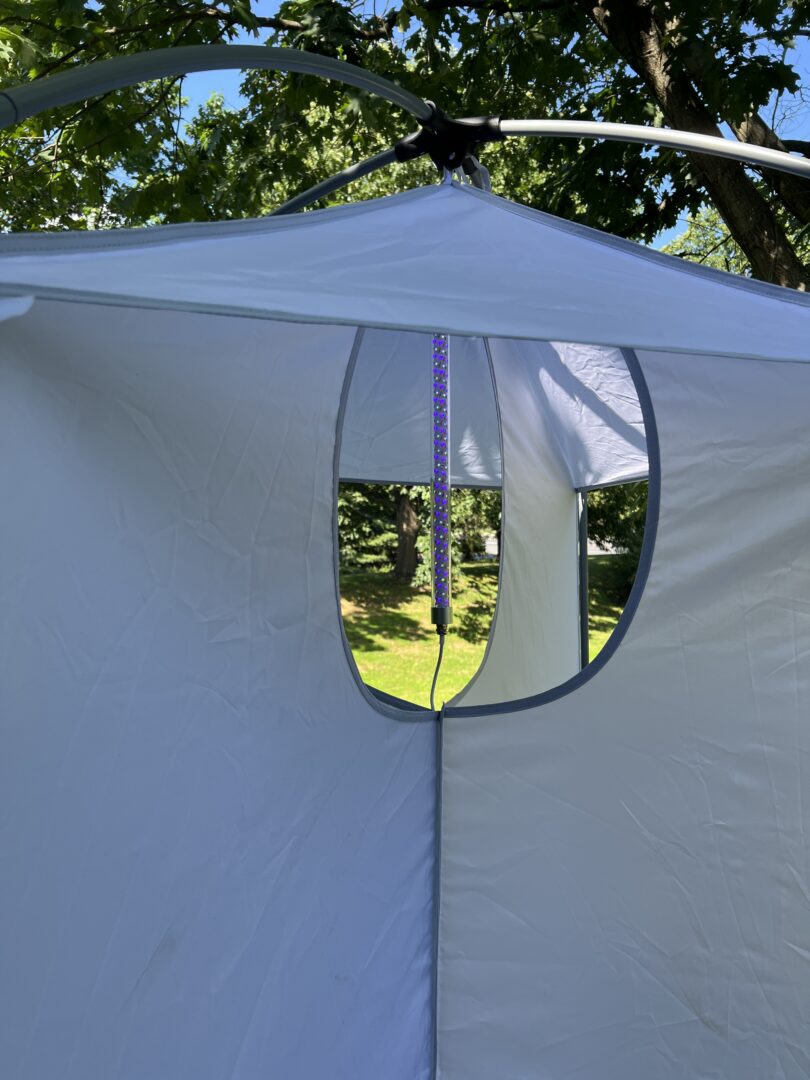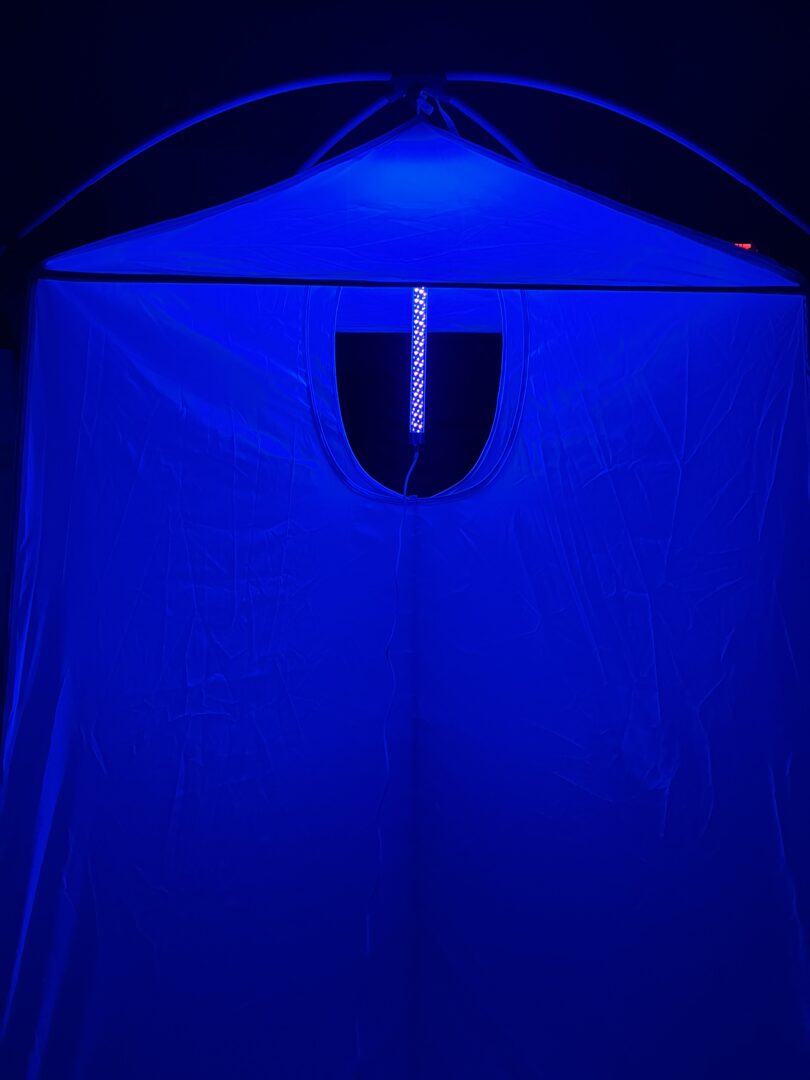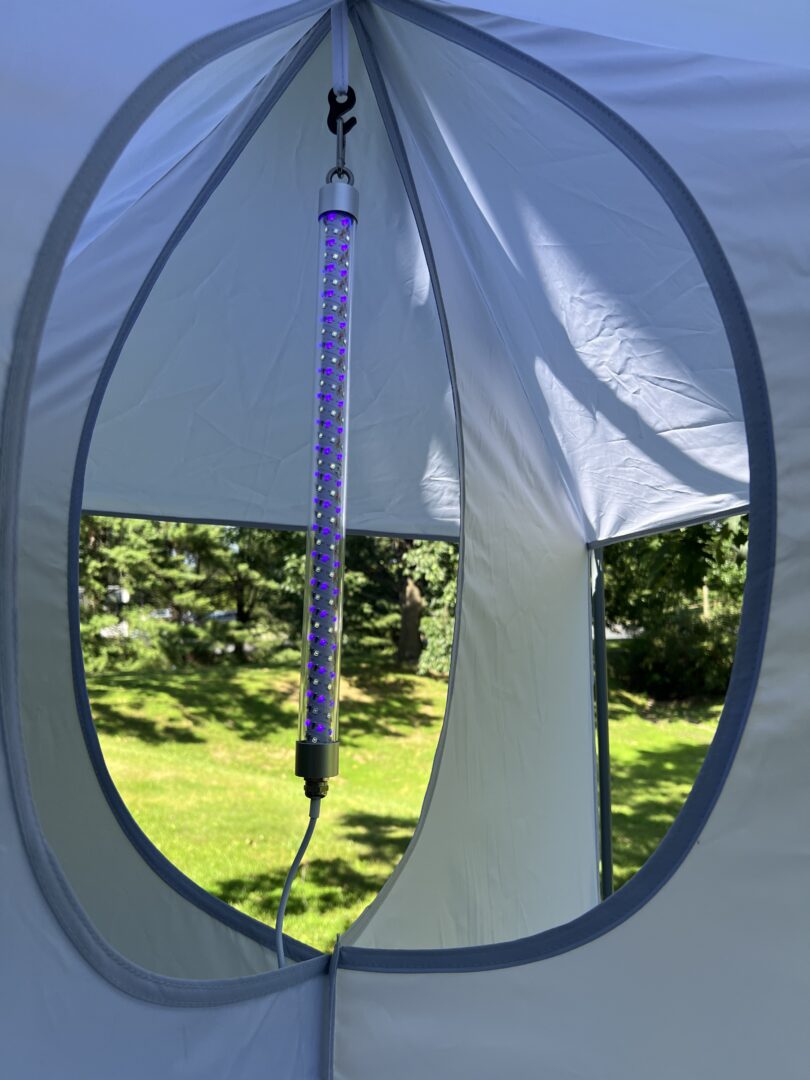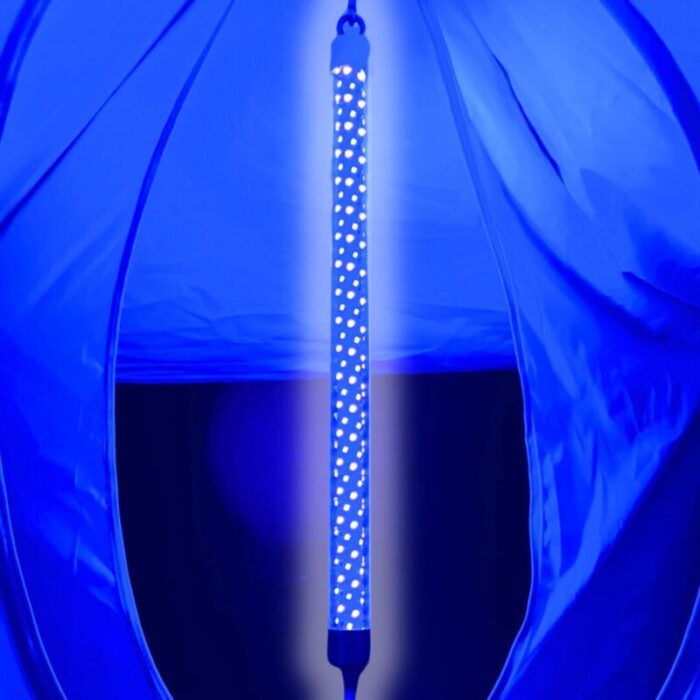Description
General Product Information – LED Blacklight UV Light
“Blacklighting”, “mothing”, or “light-sheeting” is the practice of utilizing a blacklight (ultraviolet) to attract a variety of night-flying insects (ex: moths and beetles) by taking advantage of the insects’ natural use of the moon’s light to orient themselves and navigate at night. Paired with a large, white, and suspended surface (like our Light Trap Collecting Tent) you have the perfect recipe for observing the diversity of night-flying insects in your area!
The Ecology Supplies LED Blacklight utilizes 365nm and 395nm LEDs to offer similar light attraction compared to traditional tube lighting and no ballast is required. Our light can be use with power banks/generators/outlets which are becoming more and more common.
Product Specs:
- Light Diameter = 1 inch; Length of LED portion = 13.25 inches; Full Light Construction = 16 inches; Cable Length = 8 feet
- AC Adapter Type A Plug; Input: 100-240V~50/60Hz
- Output: 24 volts 0.5 amps; 12 watts
This is an alternative blacklight to the Bioquip model 2804, 2805, and 2806.
Key features:
- Portable & Lightweight: includes a drawstring carrying bag, this LED Blacklight is ready for travel.
- Effective: wide range of the UV spectrum (365nm – 395nm) that mimics wavelengths of moonlight
- Versatile: complete with a carabiner clip, you can set this light up in various places
- Durable & Weatherproof : the outer sheath protects the LED diodes
Battery Sold Separately
Examples of power banks compatible with the Ecology Supplies LED Blacklight include This Anker Portable Power Station or for a budget friendly option, check out the GENSROCK Portable Power Station.
Safety
When working with UV lights, eye protection is highly encouraged. Due to the density of LEDs, the top and bottom of the light get hot and it is recommended to handle the light using the carabiner and letting the light cool after use.




Take your Blacklighting to the Next Level!
Once you have a great light and tent set up, you can level up your blacklighting by setting up an iNaturalist account to take advantage of their resources like crowdsourcing species identification and also keep record of all the night-flying insects you capture! Choosing the right location will also impact your blacklighting experience. By simply choosing a less lit area, adjacent to diverse habitats (meadows, forests, etc.) can increase the diversity of arthropods you observe. If you blacklight near a body of water, you might observe a different diversity of arthropods, like mayflies. Another helpful tactic is to keep in mind the time of night and weather. Begin your blacklighting at dusk and then continue into the night, and warm/humid nights are ideal. Keep in mind, that blacklighting in the same location but over multiple nights can result in different species showing up too.
Additional Information
Check out this helpful iNaturalist post on “Blacklighting Beginners Questions and this Natural history Museum of LA County story.
For collection and identification, consider using an Insect Aspirator, Featherweight Forces, and a Pocket Magnifier.






Reviews
There are no reviews yet.